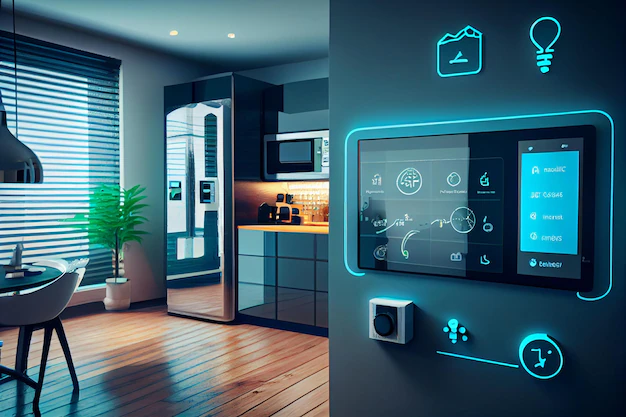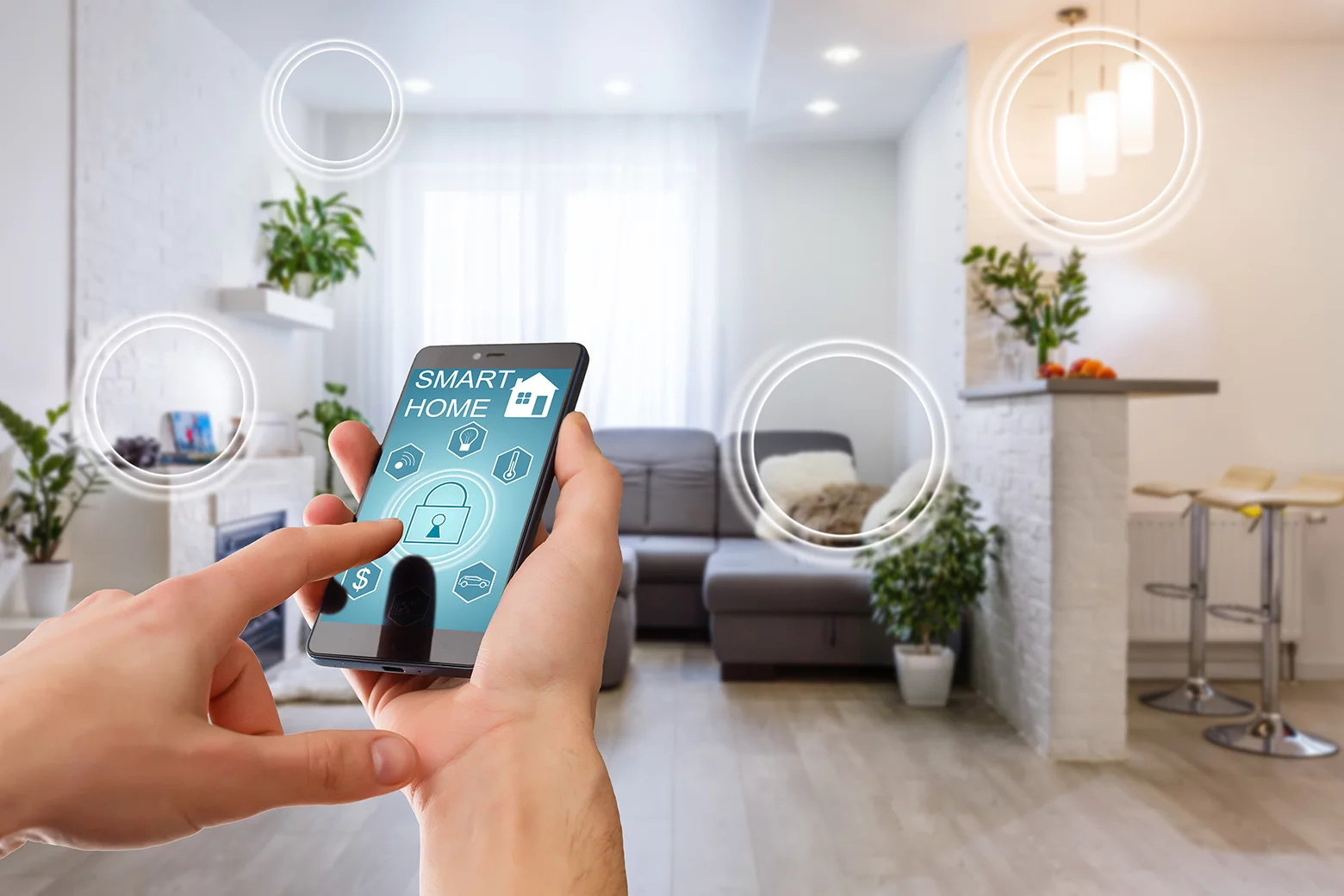Introduction
Welcome to the future of home living! Smart Home Integration is not just a buzzword but a lifestyle upgrade that enhances convenience, efficiency, and security. In this comprehensive guide, we’ll delve into the latest technologies and devices reshaping homes into smart, connected spaces.
Explore Popular Smart Home Hub Options
In the ever-evolving landscape of smart home technology, choosing the right hub is crucial for seamlessly integrating and controlling your connected devices. Here’s a closer look at some popular smart home hub options:
Amazon Echo (Alexa)
As a powerhouse in the smart home arena, Amazon Echo utilizes Alexa as its voice-controlled assistant. With an extensive list of compatible devices and skills, it acts as a centralized hub, effortlessly managing everything from lights to thermostats.
Google Home (Google Assistant)
Google’s smart home ecosystem is centered around Google Home, featuring the highly capable Google Assistant. This hub excels in its integration with Google services and provides a user-friendly interface for managing a variety of smart devices.
Samsung SmartThings
Known for its versatility, SmartThings supports a wide range of protocols, making it compatible with numerous devices. It not only connects seamlessly with Samsung products but also embraces third-party integrations, offering a comprehensive smart home experience.
Apple HomeKit
For Apple enthusiasts, HomeKit serves as the go-to hub, offering a secure and efficient platform. HomeKit’s emphasis on privacy and seamless integration with Siri provides a smooth experience for managing smart home devices within the Apple ecosystem.
Hubitat Elevation
If you prefer local control and minimal dependence on the cloud, Hubitat Elevation is a compelling option. This hub allows for the automation of devices even when the internet is down, providing a robust solution for privacy-conscious users.
In choosing a smart home hub, consider factors such as device compatibility, ease of use, and your preferred voice assistant to ensure a cohesive and enjoyable smart home experience.
Benefits of Having a Central Control System for Connected Devices
Investing in a central control system, or smart home hub, for your connected devices brings forth a myriad of benefits that contribute to a more efficient and enjoyable living space. Here are some key advantages:
Streamlined Automation
A central hub allows you to create cohesive automation routines, enabling your devices to work together seamlessly. For example, you can set up a “Good Morning” routine that turns on lights, adjusts the thermostat, and starts your coffee maker with a single command.
Enhanced Accessibility
With a centralized control system, you can monitor and manage all your smart devices from a single interface, usually a smartphone app. This accessibility provides convenience, especially when you’re away from home, allowing you to check security cameras or adjust settings remotely.
Interoperability
Different smart home devices often operate on various communication protocols. A central hub acts as a unifying force, bridging the gap between devices that use different standards. This ensures that your smart thermostat can communicate with your smart lights, creating a cohesive ecosystem.
Voice Control
Most smart home hubs integrate with popular voice assistants like Alexa, Google Assistant, or Siri. This enables hands-free control of your devices, enhancing the overall user experience and making it more accessible for individuals with mobility challenges.
Energy Efficiency
Through intelligent automation, a smart home hub can optimize energy usage. For instance, it can adjust thermostat settings based on your daily routine or turn off lights and appliances when they are not in use, contributing to both energy savings and a reduced environmental footprint.

Integration of Voice-Activated Assistants (e.g., Amazon Alexa, Google Assistant)
In the ever-evolving landscape of technological advancements, the integration of voice-activated assistants has emerged as a game-changer. Leading the charge are prominent players like Amazon Alexa and Google Assistant, seamlessly embedding themselves into our daily lives. These voice-controlled systems bring a futuristic touch to how we interact with our devices, transforming mere gadgets into intuitive companions.
With the integration of these assistants, users can accomplish a myriad of tasks with just a vocal command. From setting reminders and controlling smart home devices to answering queries and providing real-time information, the capabilities are boundless. This convergence of artificial intelligence and voice recognition technology has ushered in a new era where human-machine interaction is more natural and efficient.
As businesses and developers embrace this trend, the integration extends beyond just smart speakers. Smartphones, wearables, and even household appliances are becoming voice-responsive, creating a connected ecosystem that responds to the user’s beck and call. This interconnectedness not only enhances the overall user experience but also lays the foundation for a more intuitive and efficient future.
Home Integration: How Voice Control Enhances User Experience and Convenience
Voice control goes beyond the mere novelty of talking to your devices; it fundamentally reshapes the user experience, making it more seamless and user-friendly. One of the key advantages lies in its hands-free operation, allowing users to multitask effortlessly. Whether cooking in the kitchen, driving a car, or simply relaxing on the couch, users can access information and control their surroundings without lifting a finger.
The convenience factor cannot be overstated. Voice-activated systems eliminate the need for navigating complex menus or typing on small screens. This not only saves time but also reduces the friction between the user and the device, fostering a more natural and enjoyable interaction. The elderly and those with mobility challenges find particular benefit in this accessibility, as it provides a more inclusive technological landscape.
Moreover, voice control adds a layer of personalization to technology. The systems learn from user preferences, adapting to individual nuances in speech and behavior. This learning curve results in a tailored experience, where the technology becomes attuned to the user’s habits and anticipates their needs.
Smart Doorbell Cameras and Their Features
Smart doorbell cameras have revolutionized home security by providing homeowners with real-time monitoring and enhanced convenience. These devices serve as the first line of defense, offering a comprehensive view of the front porch and entryway. With advanced features and connectivity, smart doorbell cameras are a crucial component of any modern home security system.
One notable feature of these cameras is their high-definition video quality, allowing users to capture clear images of visitors and potential intruders. The wide-angle lenses ensure a broad field of view, minimizing blind spots and providing comprehensive coverage. Some models also come equipped with night vision capabilities, ensuring reliable surveillance even in low-light conditions.
Another key aspect is the two-way audio functionality, enabling homeowners to communicate with visitors remotely. This can be particularly useful for instructing delivery personnel, deterring potential intruders, or simply greeting guests when away from home. Additionally, many smart doorbell cameras offer motion detection and instant alerts, keeping homeowners informed of any activity at their doorstep.
In terms of integration, these cameras seamlessly connect to mobile apps, allowing users to monitor their homes from anywhere. Cloud storage options ensure that recorded footage is securely stored and easily accessible. Smart doorbell cameras also often integrate with other smart home devices, creating a cohesive and interconnected security system.
Integration of Smart Locks for Enhanced Security
Enhancing home security goes beyond surveillance, and the integration of smart locks adds an extra layer of protection. Smart locks offer homeowners the ability to control and monitor access to their homes remotely. This innovative technology not only improves security but also provides a convenient and flexible approach to home access.
One of the primary features of smart locks is the ability to lock and unlock doors using a smartphone app. This means homeowners can grant access to trusted individuals, such as family members or service providers, without the need for physical keys. Some smart locks also feature keyless entry through PIN codes or biometric authentication, further reducing the risk of unauthorized access.
Integration with other smart home devices, such as doorbell cameras, allows for a seamless security ecosystem. Homeowners can receive real-time alerts when someone approaches their door and even remotely grant access to visitors. In case of a security threat, smart locks can be part of automated responses, such as triggering alarms or notifying authorities.
Overview of Smart Surveillance Systems
Smart surveillance systems have evolved to become comprehensive solutions for safeguarding homes. These systems typically include a network of cameras strategically placed around the property, providing continuous monitoring and deterrence against potential intruders. The integration of artificial intelligence (AI) enhances the capabilities of these systems, allowing for intelligent and proactive security measures.
Key features of smart surveillance systems include high-resolution cameras with pan-tilt-zoom capabilities, enabling users to remotely control and adjust the camera’s field of view. The inclusion of AI-powered analytics enables the system to differentiate between ordinary movements and suspicious activities, reducing false alarms. This level of sophistication ensures that homeowners are alerted only when there is a genuine security concern.
Cloud storage plays a vital role in smart surveillance, allowing for the secure storage of footage and easy retrieval when needed. Many systems also offer continuous recording, ensuring that every moment is captured for later review. Mobile app integration provides users with the flexibility to monitor their homes in real-time and receive instant notifications of any security events.
FAQs
How does Smart Home Integration enhance security?
Smart Home Integration elevates security through AI-powered cameras, sensors, and real-time monitoring, providing advanced threat detection and ensuring the safety of your home.
Can I control multiple smart devices with one central hub?
Absolutely! Many smart home ecosystems offer centralized hubs that allow you to control various devices seamlessly, providing a unified and user-friendly experience.
Are smart home devices compatible with voice commands?
Yes, most smart home devices are compatible with voice commands, allowing you to control them effortlessly through voice-activated assistants like Amazon Alexa or Google Assistant.
How do smart sensors contribute to energy efficiency?
Smart sensors detect changes in the environment and adjust devices accordingly, optimizing energy usage. This leads to reduced energy consumption and a more sustainable, cost-effective home.
Can I integrate smart home solutions for a sustainable lifestyle?
Certainly! Many smart home technologies focus on sustainability, incorporating eco-friendly features to help you reduce your carbon footprint and live a more environmentally conscious lifestyle.
Is Smart Home Integration complicated to set up?
Not at all! Most smart home devices are designed for easy installation and setup. Many come with user-friendly apps that guide you through the process, making Smart Home Integration accessible for everyone.
You may like it: Eco-Friendly Travel: Sustainable Tourism Initiatives
Conclusion
Embark on the journey to transform your home into a smart, connected space. With the latest technologies and devices, Smart Home Integration offers a lifestyle upgrade, bringing unparalleled convenience, security, and efficiency to your daily life.

